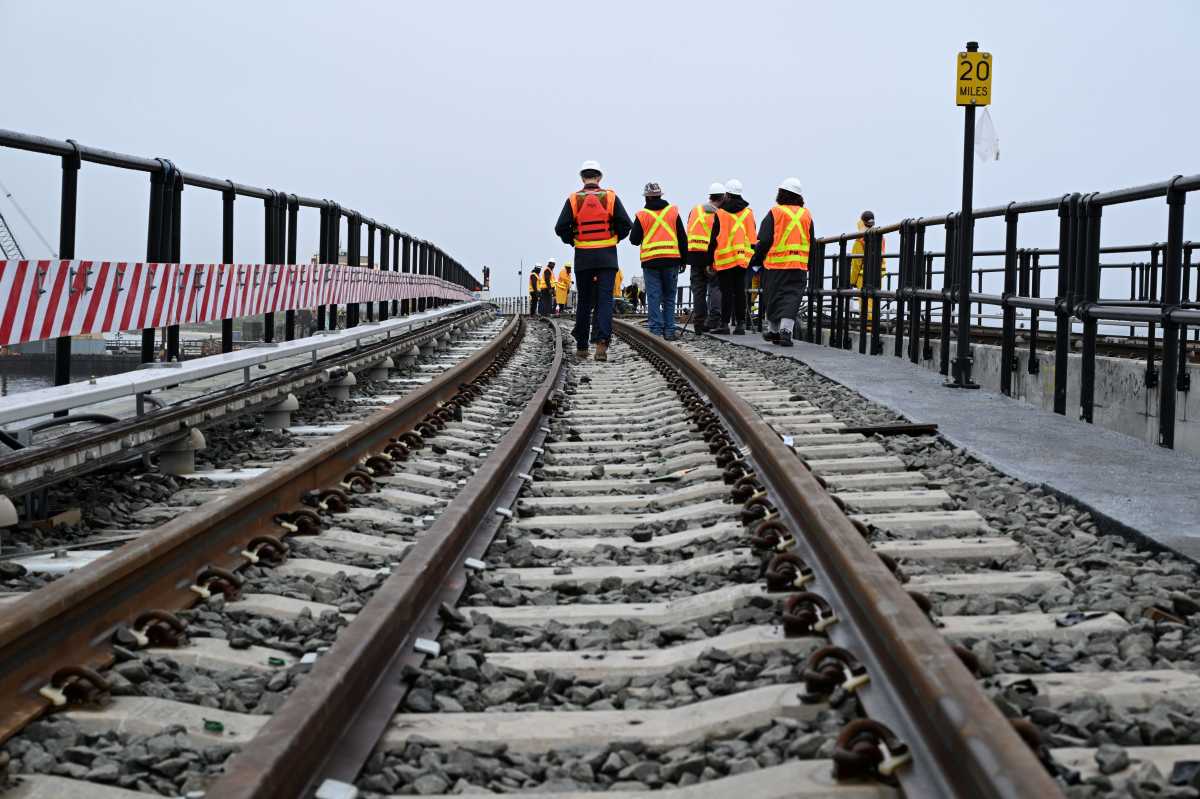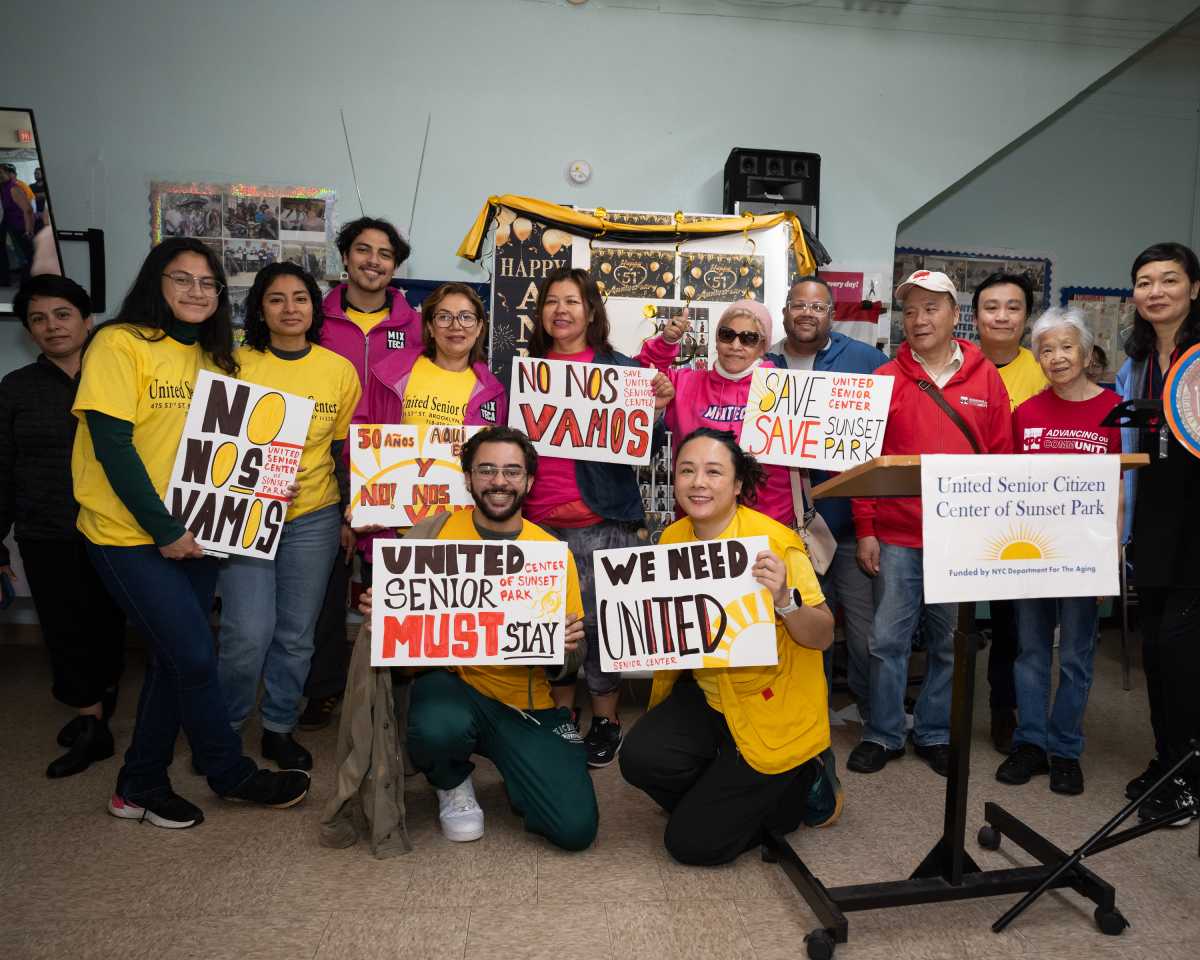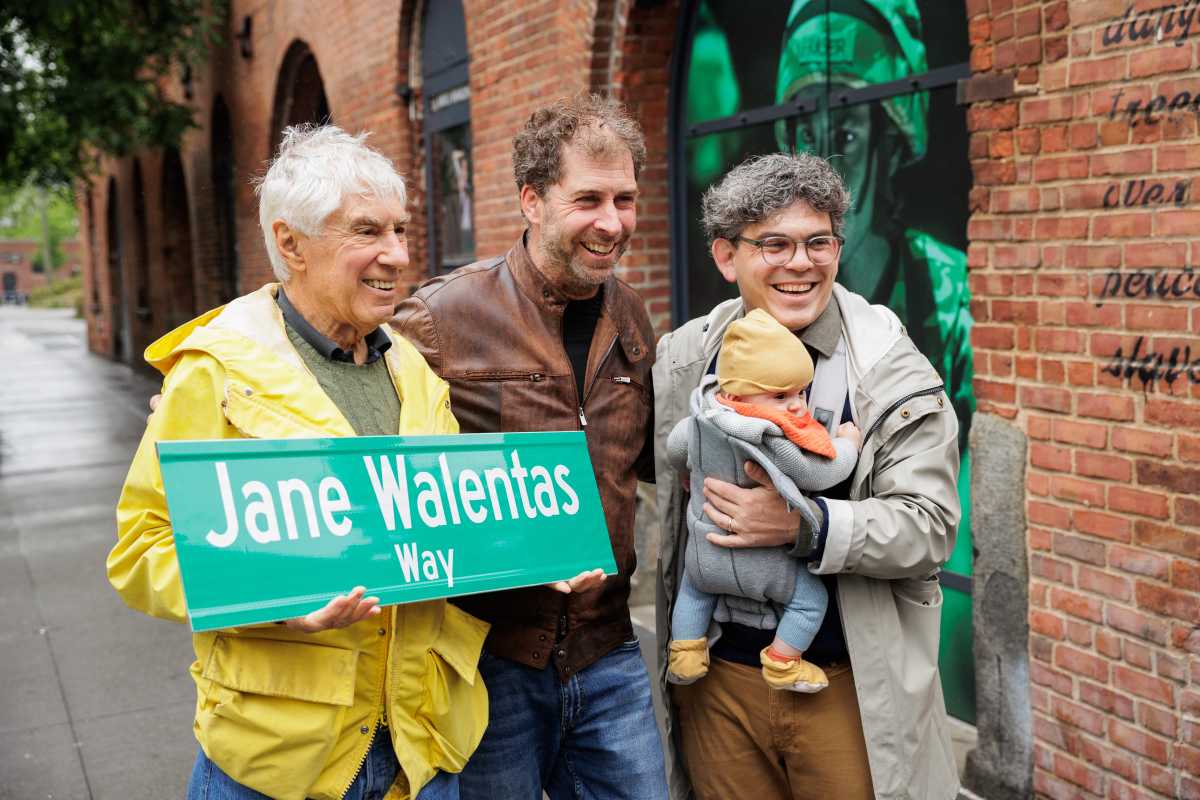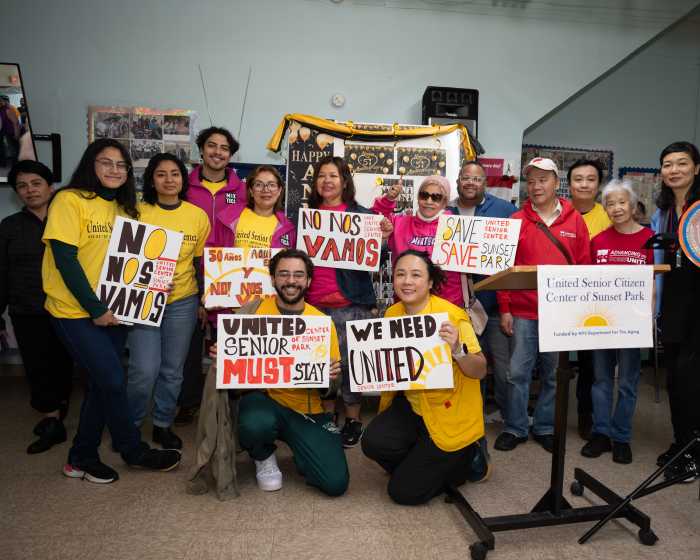
The city has cordoned off the northern tip of Bowling Green with concrete barriers amid fears that a terrorist might attempt to use a vehicle to mow down the droves of tourists who flock there to snap selfies with the Charging Bull and Fearless Girl statues.
BY JACKSON CHEN
So much for free-range beef.
The city has blockaded the popular Charging Bull and Fearless Girl statues at the northern tip of Bowling Green with several heavy-duty concrete barricades.
The barriers stretch from the Charging Bull to the pointed northern tip of the sidewalk where Morris Street meets Broadway. According to Bowling Green Association chairman Arthur Piccolo, he saw the concrete barricades being installed by NYPD at around 10 pm on June 29. Before the barricades, the cobblestone plaza where the bronze sculptures reside was surrounded only by plastic bollards.

Though the barriers were installed ostensibly for safety reasons, some say they are creating new hazards, with people standing on top of them to get better camera angles, or walking outside them in the roadway to avoid the crush of tourists.
The heavy barriers were installed to protect visitors from cars on the surrounding streets, but Piccolo said they create new potential hazards. Tourists were seen standing on top of the concrete barricades to get better camera angles of the Charging Bull and Fearless Girl and others walked along the outside of the barriers to avoid the crush of tourists surrounding the statues. Piccolo said these habits are an accident waiting to happen.
“There’s a real potential for somebody to get pushed off those things and crack their head on the roadway, or even worse, get run over by a truck, bus, or a vehicle,” Piccolo said.
The Bowling Green booster went further, suggesting that the barricades were put in as retribution for the controversy surrounding the installation of the Fearless Girl statue.
The artist who created the Charging Bull back in 1989, Arturo Di Modica, opposed the placement of the diminutive sculpture in juxtaposition to his own creation, because it sought to co-opt his own work and transform it from a symbol of American economic vitality into a symbol of sexism. Making the new statue even more annoying to Di Modica and Piccolo, the Fearless Girl was hyped as a tribute to female empowerment, but was actually the centerpiece of a marketing campaign by McCann Worldgroup to promote a fund managed by State Street Global Advisors.
In response, Mayor de Blasio took to Twitter to take a jab at Di Modica, tweeting, “Men who don’t like women taking up space are exactly why we need the Fearless Girl.”
Piccolo said he believes the dispute led the mayor to install the obstructive barriers in retaliation for the lawsuit, adding that it was done at night and without community input.
Neither the Mayor’s Office nor the NYPD returned calls for comment about the barriers.
But according to the Downtown Alliance, there was already agreement in the community that the area around the two tourist magnets should be better protected, said spokesman Andrew Breslau.
“There was broad consensus that what was needed was something to protect pedestrians, tourists, the Fearless Girl and the Charging Bull from vehicular traffic,” Breslau explained. “Because a car, by accident or intention, could careen through a tightly assembled group of people.”
A string of recent incidents in Europe has sparked fears that lone-wolf terrorists might use vehicles to kill bystanders at tourist spots in the city. In June, eight people were killed when terrorists used a van to plow into pedestrians at London Bridge before running to the nearby Borough Market to stab passersby.
The June incident came on the heels of a March terrorist attack where five people were killed when a car was driven into pedestrians at London’s Westminster Bridge. And a year ago this week, terrorists killed 86 people in Nice, France, by driving a truck through a crowd celebrating Bastille Day in the roadway.
“The thing you have to keep in the back of your mind is the worse case scenario,” Breslau said. “And providing some sort of protection for vehicular accidents or intentional misuse of a vehicle is warranted in this location.”



































